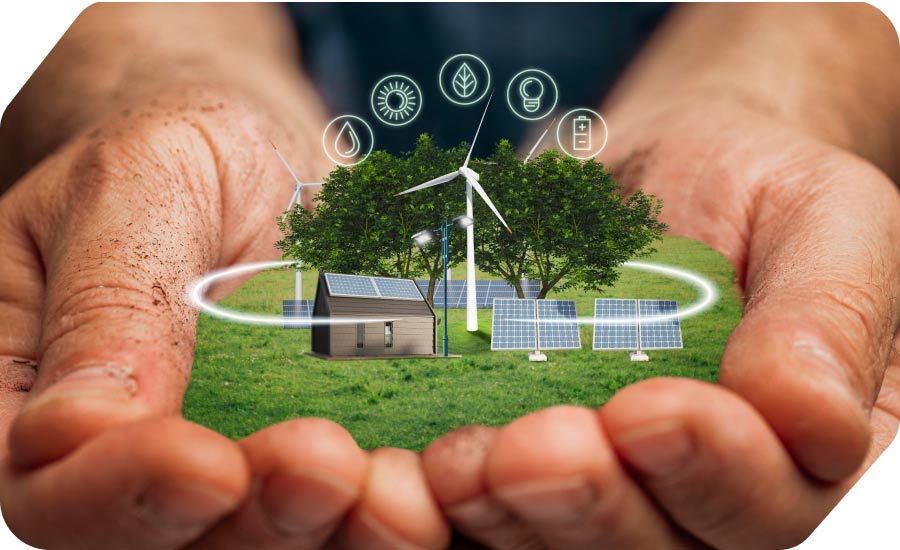Solar energy has emerged as one of the most cost-effective and scalable solutions to meet the world’s growing demand for clean power. However, developing and deploying solar projects—especially in emerging economies—requires more than just sunlight and technology. It demands strong financing frameworks, clear risk management, and supportive public policies. Financing remains the lifeblood of solar expansion. Without access to affordable capital and sustainable business models, many promising projects never move beyond the planning phase. In this article, we break down the main financing models, incentives, risks, and mitigation strategies that shape today’s solar industry, with a focus on unlocking investment opportunities in developing regions. Main Financing Models for Solar Projects Different financing structures determine how solar projects are funded, owned, and operated. Each comes with its own advantages depending on scale, risk tolerance, and regulatory context. 1. Power Purchase Agreements (PPAs) A Power Purchase Agreement (PPA) is a long-term contract between a power producer and a buyer (often a utility, corporation, or government).Under this model: The developer builds and operates the solar plant. The buyer commits to purchasing electricity at a fixed rate over 10–25 years. The agreement guarantees predictable revenue for investors. Advantages: Reduces market risk. Enables long-term financing through bankable cash flows. Popular among both utility-scale and commercial solar projects. 2. Leasing and Pay-As-You-Go Models For small businesses and households, leasing or pay-as-you-go (PAYG) systems are highly effective: Customers pay for solar equipment in installments. Ownership transfers after full payment. Mobile payment platforms make it easy to manage transactions in off-grid regions. Examples: Companies like M-KOPA and Bboxx have successfully deployed PAYG solar systems across Africa, bringing affordable electricity to millions. 3. Third-Party Investment and Joint Ventures Developers can partner with investors or corporations to share risks and rewards. Third-party ownership: Investors fund installation and maintenance; users simply pay for the energy consumed. Joint ventures: Local firms collaborate with international partners to pool resources and expertise. This model promotes technology transfer and strengthens local markets. Government Incentives and Global Financing Programs Public policy plays a pivotal role in accelerating solar investment. Governments and international institutions have introduced multiple mechanisms to make solar energy more attractive. 1. Fiscal Incentives Tax credits and exemptions: Reduce the overall cost of capital equipment. Accelerated depreciation: Allows investors to recover initial costs faster. Import duty reductions: Lower tariffs on solar panels, batteries, and components. 2. Subsidies and Feed-in Tariffs (FiTs) Feed-in tariffs guarantee a fixed price for electricity sold to the grid, ensuring predictable revenue streams. This approach has fueled solar booms in countries like Germany, India, and South Africa. 3. Green Bonds and Climate Funds International organizations are increasingly financing renewable energy projects through: Green Climate Fund (GCF) World Bank and IFC programs African Development Bank’s Sustainable Energy Fund These initiatives offer concessional loans, guarantees, or co-investment opportunities, helping mitigate financial risk and attract private capital. 4. Results-Based Financing (RBF) In this model, funding is released only after achieving specific milestones—such as the number of installations or households connected. This ensures accountability and measurable impact, aligning with ESG principles. Common Risks in Solar Financing While solar energy projects offer strong long-term returns, they also face distinct risks that must be managed carefully. 1. Policy and Regulatory Risks Sudden changes in tariffs or subsidies can undermine project viability. Weak enforcement of power purchase contracts may deter investors. Complex permitting processes delay implementation. Mitigation: Governments should maintain transparent, stable, and investor-friendly policies to build trust and attract consistent capital. 2. Market and Currency Risks Solar projects in developing economies often rely on foreign investment. Currency depreciation or inflation can reduce project profitability. Mitigation: Use of currency hedging instruments and local-currency financing can protect returns against exchange rate fluctuations. 3. Technical and Operational Risks Equipment underperformance or poor maintenance reduces expected output. Inadequate grid infrastructure causes curtailment losses. Natural disasters or extreme weather events can damage assets. Mitigation: Regular monitoring, insurance coverage, and adherence to international engineering standards are essential safeguards. 4. Social and Environmental Risks Projects that overlook community engagement or environmental assessments may face opposition or reputational damage. Mitigation: Early stakeholder consultation and robust ESG compliance frameworks can prevent conflicts and ensure long-term acceptance. Mitigation Strategies and Best Practices To build resilience and investor confidence, stakeholders must integrate financial innovation with sustainability best practices. 1. Blended Finance Approaches Blended finance combines public, private, and philanthropic funds to de-risk projects in high-impact sectors. For example: Public institutions provide concessional loans or guarantees. Private investors contribute commercial capital. Development agencies ensure social and environmental safeguards. This structure has proven effective in scaling solar adoption across Africa and Southeast Asia. 2. Performance-Based Contracts Developers and operators can use performance guarantees to assure investors that the system will meet output targets. If performance drops, the developer compensates the buyer—creating accountability and reliability. 3. ESG Integration Incorporating Environmental, Social, and Governance (ESG) metrics into project design helps attract sustainable investors. ESG-aligned projects: Have better access to impact capital. Experience fewer community conflicts. Demonstrate long-term resilience and transparency. 4. Diversification and Risk Pooling Spread investments across regions and technologies. Create solar investment funds or cooperatives to distribute risk. Engage local financial institutions for co-financing. Solar energy is more than a technological revolution—it’s a financial transformation. The success of solar projects depends not only on innovation and engineering but also on creative financing, strong governance, and inclusive participation. As the world races toward net-zero, emerging economies stand at the forefront of opportunity. By adopting transparent policies, leveraging blended finance, and integrating ESG standards, they can attract the capital needed to power millions sustainably. At Imperium Green & Impact, we help institutions design and implement financing frameworks that bridge the gap between impact and investment—turning solar potential into measurable progress. Together, we can finance the future of clean energy.
Integrating Energy Storage with Solar: How Batteries and Smart Grids Enhance Reliability
Solar power is the cornerstone of the global transition toward renewable energy. Yet, one challenge persists: intermittency. The sun doesn’t always shine—cloudy days and nighttime hours can cause fluctuations in energy supply. To ensure stable and reliable power, solar energy must be paired with efficient storage systems and intelligent grid management. Energy storage and smart grids are no longer futuristic concepts; they are the backbone of a modern, resilient energy ecosystem. In this article, we explore how integrating batteries and digital networks can enhance the reliability, flexibility, and sustainability of solar energy systems, especially in emerging economies. Understanding Solar Energy Storage 1. The Role of Storage in Renewable Systems Energy storage allows electricity generated during sunny hours to be stored and used later when solar production drops. This capability: Reduces dependence on fossil fuel backups. Smooths out power fluctuations. Enables consistent supply to homes, industries, and critical services. In short, storage transforms solar energy from an intermittent resource into a reliable power source. 2. Key Energy Storage Technologies Several battery technologies are shaping the energy transition: Lithium-ion batteries: The most widely used for their high efficiency and falling costs. Flow batteries: Ideal for large-scale, long-duration applications. Sodium-ion and solid-state batteries: Emerging technologies offering better safety and scalability. Thermal and mechanical storage: Alternative methods that store energy as heat or kinetic force (e.g., flywheels, compressed air). These innovations make it possible to adapt storage solutions to both utility-scale projects and off-grid rural systems. 3. The Cost Evolution Battery prices have dropped by over 80% in the past decade, driven by advances in manufacturing and material efficiency. This decline has made solar-plus-storage systems more financially viable, even in developing countries. The Rise of Smart Grids While batteries store energy, smart grids manage how that energy flows—intelligently, dynamically, and efficiently. 1. What Is a Smart Grid? A smart grid is a modern electricity network that uses digital communication to monitor, control, and optimize energy generation, distribution, and consumption in real time. Core components include: Sensors and IoT devices to collect data on grid performance. AI-based control systems for predictive maintenance and energy balancing. Bidirectional communication that allows users to both consume and supply electricity (prosumer model). 2. Advantages of Smart Grids Real-time demand management: Balances energy production with consumption. Faster fault detection and response: Minimizes power outages. Integration of renewables: Allows multiple clean energy sources to coexist harmoniously. Consumer empowerment: Enables smart meters and dynamic pricing for efficient usage. The Synergy Between Solar, Storage, and Smart Grids When combined, solar energy, batteries, and smart grids create a highly adaptive, low-carbon energy ecosystem. 1. Enhanced Grid Stability Solar output can fluctuate within minutes due to weather changes. Smart grids detect these shifts instantly and draw on battery reserves to maintain a steady flow of electricity—preventing blackouts or frequency drops. 2. Increased Energy Independence Communities and businesses equipped with solar-plus-storage systems can operate independently from centralized utilities. This is particularly beneficial in rural or disaster-prone areas where grid access is limited. 3. Optimized Energy Distribution Smart algorithms prioritize where energy is most needed—homes, hospitals, or industries—ensuring efficient use of stored solar power. Surplus electricity can even be sold back to the grid, creating new revenue streams. Economic and Environmental Benefits Integrating storage and smart technologies offers multidimensional value beyond reliability. 1. Economic Advantages Reduced operational costs due to automation and predictive analytics. Lower peak-demand charges for industrial users. Job creation in battery assembly, grid software development, and maintenance sectors. Improved project bankability, attracting investors through stable revenue models. 2. Environmental Gains Reduced carbon footprint: Less reliance on diesel generators and fossil peakers. Energy efficiency: Smart systems minimize waste through better forecasting. Support for decarbonization targets: Aligns national grids with global climate goals. Challenges in Implementation Despite their promise, integrating storage and smart grids in emerging economies presents several hurdles. 1. High Upfront Costs While prices are falling, the initial investment for battery systems and smart infrastructure remains substantial. Many developing nations lack financing mechanisms to support large-scale adoption. 2. Limited Technical Expertise The deployment and maintenance of advanced grid systems require skilled technicians and engineers—often in short supply. Capacity building is crucial for sustainable operations. 3. Policy and Regulatory Gaps Few countries have clear frameworks for grid modernization, data management, or energy trading. Policymakers must update regulations to encourage private investment and innovation. Global Examples of Integration Success 1. India’s Solar Storage Pilot Projects India’s National Solar Mission integrates utility-scale solar farms with large lithium-ion storage systems to stabilize its rapidly expanding renewable grid.Lesson: Government-led pilots attract private capital and accelerate learning. 2. South Africa’s Hybrid Microgrids In remote areas, hybrid microgrids combining solar panels, batteries, and diesel backup ensure 24/7 power supply for rural communities.Lesson: Hybridization provides flexibility and gradual transition toward 100% renewables. 3. Chile’s Smart Grid Transformation Chile’s national grid integrates advanced digital monitoring and renewable forecasting systems.Lesson: Digitalization enhances reliability and investor confidence. Best Practices for Stakeholders To maximize impact, stakeholders in emerging economies should consider these key actions: Develop national roadmaps for smart grid and storage integration. Foster local innovation ecosystems for battery assembly and grid software. Encourage blended finance to reduce project risk. Invest in education and technical training for long-term sustainability. Align policy frameworks with global renewable energy standards. Conclusion: Building the Reliable Grids of Tomorrow The fusion of solar power, energy storage, and smart grids represents the future of energy—clean, efficient, and intelligent. By addressing intermittency and optimizing distribution, this integration empowers countries to achieve both energy security and climate resilience. For emerging economies, the path forward lies in innovation, collaboration, and capacity building. Governments, investors, and development agencies must work together to make solar-plus-storage systems affordable and accessible. At Imperium Green & Impact, we help organizations design and finance resilient renewable systems that combine innovation with real-world impact.Together, we can build the reliable, sustainable, and equitable energy grids of tomorrow.
Solar Energy in Emerging Economies: Challenges, Opportunities & Best Practices
Across the globe, the energy landscape is undergoing a massive transformation. Emerging economies—many located in regions with some of the highest solar irradiation levels on Earth—are uniquely positioned to benefit from this shift. Solar energy offers not only a clean and renewable power source but also a path toward economic growth, social inclusion, and energy independence. However, unlocking this potential is far from simple. Financing gaps, policy instability, and infrastructure challenges continue to slow progress. In this article, we explore the key challenges, opportunities, and best practices for developing solar energy projects in emerging markets, with a particular focus on Africa and other developing regions. The Potential of Solar Energy in Emerging Markets Emerging economies are often characterized by rapid population growth, increasing energy demand, and limited access to reliable electricity. Solar energy can play a transformative role in addressing these issues. 1. Abundant Solar Resources Many developing nations—especially across Africa, Asia, and Latin America—enjoy over 300 days of sunlight per year. This natural advantage positions them as ideal hubs for solar power generation. 2. A Catalyst for Economic and Social Inclusion Expanding solar access stimulates job creation in installation, maintenance, and manufacturing. Beyond employment, solar solutions enable: Rural electrification, bringing light and power to off-grid communities. Improved education and healthcare, through access to reliable electricity. Support for small businesses, empowering local economies. 3. Decentralized Power for Greater Resilience Solar mini-grids and rooftop systems reduce dependence on centralized networks and fossil fuels, improving energy resilience in remote or fragile regions. Key Challenges Facing Solar Development Despite the promise, the path toward widespread solar adoption in emerging economies is complex. 1. Financing Constraints Limited access to capital remains the biggest bottleneck. Many investors perceive solar projects in developing regions as risky due to currency fluctuations and uncertain returns. Small-scale developers often lack collateral or experience to attract institutional financing. Solution Path: Innovative models like blended finance—combining public, private, and philanthropic funds—can de-risk projects and attract more investors. 2. Policy and Regulatory Barriers Solar investors thrive on predictability. Yet, in many countries: Energy policies change frequently. Licensing processes are cumbersome. Import tariffs on solar components remain high. Without stable regulation, even viable solar projects struggle to scale. Governments play a crucial role in setting clear renewable targets, offering incentives, and simplifying procedures. 3. Infrastructure and Technical Limitations Weak grid infrastructure can prevent large-scale solar integration. Shortage of skilled technicians affects maintenance quality. Supply chain disruptions delay installations. Developing local capacity—through technical training and education—is essential for long-term sustainability. Opportunities and Innovations Driving Growth Despite these challenges, several innovations are reshaping the solar sector across emerging markets. 1. Off-Grid and Micro-Grid Solutions Mini-grids and solar home systems have revolutionized rural electrification. These decentralized solutions: Operate independently of national grids. Provide scalable energy access. Are quicker to deploy and maintain. Example: In Kenya, solar micro-grids now power hundreds of remote villages, providing electricity for schools, clinics, and small industries. 2. Green and Impact Financing The rise of ESG investing and green bonds offers new avenues for solar funding. Impact investors are increasingly channeling capital into sustainable infrastructure, driven by both profit and purpose. Key financing mechanisms include: Public-private partnerships (PPPs) for shared risk. Results-based financing (RBF), where funds are released after project milestones. Carbon credits and renewable energy certificates (RECs) as additional revenue streams. 3. Technological Advancements Falling panel prices, efficient storage systems, and digital monitoring tools are making solar energy more accessible than ever. Smart technologies enable predictive maintenance, performance tracking, and better energy distribution. Solar energy stands as a beacon of hope for emerging economies—a technology capable of bridging the energy access gap while supporting economic and environmental resilience. Yet realizing its full potential requires coordinated action across governments, investors, and development partners. By adopting innovative financing models, stable policies, and local capacity-building, emerging markets can transform sunlight into prosperity. At Imperium Green & Impact, we are committed to helping organizations and governments design, finance, and implement green energy solutions that drive measurable impact.Together, we can power a cleaner, fairer, and more sustainable world.
Why Investing in Biodiversity Pays Off for Your Business
Biodiversity is more than an environmental concern — it is the backbone of ecosystem services (pollination, soil health, water regulation) that sustain industries. Investing in nature enhances resilience, reduces risks, and creates financial value. Business Benefits of Biodiversity Investment Supply Chain Resilience: Secure raw materials and reduce dependency risks. Operational Savings: Sustainable water and soil management lower long-term costs. New Revenues & Financing: Access biodiversity credits, eco-tourism, and green bonds. Compliance & Reputation: Stay ahead of evolving regulations and win customer trust. Step-by-Step Approach Assess Dependencies: Map how your business relies on nature (water, soil, pollinators). Prioritize Actions: Restore ecosystems, adopt regenerative practices, protect high-value zones. Finance & Monetize: Leverage biodiversity credits, blended finance, public–private partnerships. Track KPIs: Surface restored, services maintained, avoided operational costs. Communicate Value: Show measurable impact to clients, investors, and insurers. Protecting biodiversity is not charity — it is a profitable business strategy.
From Climate Risk to Strategic Opportunity: Turning Challenges into Growth
Climate change is no longer just a risk factor; it reshapes markets, asset valuations, and supply chains. Organizations that turn climate risk into strategy unlock resilience and new revenue streams. Step 1 — Map Physical and Transition Risks Identify exposures: flooding, drought, heat stress, or carbon regulations. Use scenario analysis and geospatial tools. Step 2 — Quantify Financial Impact Assess potential losses, supply chain interruptions, and asset devaluation. Integrate resilience into capital allocation and due diligence. Step 3 — Develop Market Solutions Climate adaptation creates markets: parametric insurance, resilience-as-a-service, or green building retrofits. Step 4 — Align Finance & Governance Integrate climate risk into board decisions, CAPEX planning, and investor reporting. Step 5 — Measure & Communicate KPIs: % of climate-resilient assets, avoided interruption costs, resilience ROI. Strategic leaders don’t just mitigate climate risk — they monetize it.
The Hidden ROI of ESG: Why It’s Not a Cost, but a Strategic Investment
In conversations about Environmental, Social, and Governance (ESG) performance, the “E” and “S” often take center stage. Climate action, diversity, and community impact naturally capture attention. Yet, without strong governance — the “G” in ESG — even the most ambitious environmental or social initiatives can falter. Governance is the foundation that determines whether ESG commitments are credible, effective, and sustainable. Understanding the Role of Governance Governance refers to the systems, processes, and structures that guide decision-making in an organization. It shapes how strategies are set, how risks are managed, and how accountability is ensured. In the ESG context, governance provides the framework through which environmental and social goals are integrated into business priorities. Good governance ensures that ESG is not treated as a marketing initiative or an afterthought, but as a core driver of corporate strategy. It involves aligning board oversight, executive responsibilities, and organizational policies with long-term sustainability objectives. Governance as a Risk Management Tool A strong governance structure acts as a safeguard against potential failures in ESG implementation. Without effective oversight, companies risk making unsubstantiated claims (greenwashing), missing regulatory requirements, or overlooking emerging risks. For example, a company may set bold carbon-reduction targets, but without governance mechanisms to monitor progress and enforce accountability, those targets can remain aspirational slogans rather than measurable outcomes. Building Governance Structures That Support ESG Success Governance for ESG is more than compliance; it is about embedding sustainability into the DNA of an organization. This can include diversifying the board to bring in expertise on environmental and social issues, integrating ESG metrics into executive performance evaluations, and establishing transparent reporting channels for stakeholders. Clear policies, well-defined responsibilities, and a commitment to ethical conduct ensure that ESG decisions are not just made but followed through. The Costs of Weak Governance Weak governance can undermine even the best ESG intentions. Companies that fail to manage governance effectively may face reputational crises, regulatory penalties, or a loss of investor trust. Case after case shows that ESG failures often stem not from bad intentions, but from a lack of systems to track, enforce, and improve commitments. Poor governance doesn’t just damage brand value — it can directly impact financial performance. Investors, lenders, and partners increasingly factor governance quality into their decision-making. Conclusion Governance is not just one pillar of ESG; it is the anchor that holds the other two in place. Without it, environmental and social commitments risk being inconsistent, ineffective, or short-lived. With it, ESG becomes a powerful driver of trust, resilience, and long-term value. For organizations serious about sustainability, investing in governance is not optional — it is the first and most crucial step toward making ESG a reality.
Why Governance is the Cornerstone of ESG
In conversations about Environmental, Social, and Governance (ESG) performance, the “E” and “S” often take center stage. Climate action, diversity, and community impact naturally capture attention. Yet, without strong governance — the “G” in ESG — even the most ambitious environmental or social initiatives can falter. Governance is the foundation that determines whether ESG commitments are credible, effective, and sustainable. Understanding the Role of Governance Governance refers to the systems, processes, and structures that guide decision-making in an organization. It shapes how strategies are set, how risks are managed, and how accountability is ensured. In the ESG context, governance provides the framework through which environmental and social goals are integrated into business priorities. Good governance ensures that ESG is not treated as a marketing initiative or an afterthought, but as a core driver of corporate strategy. It involves aligning board oversight, executive responsibilities, and organizational policies with long-term sustainability objectives. Governance as a Risk Management Tool A strong governance structure acts as a safeguard against potential failures in ESG implementation. Without effective oversight, companies risk making unsubstantiated claims (greenwashing), missing regulatory requirements, or overlooking emerging risks. For example, a company may set bold carbon-reduction targets, but without governance mechanisms to monitor progress and enforce accountability, those targets can remain aspirational slogans rather than measurable outcomes. Building Governance Structures That Support ESG Success Governance for ESG is more than compliance; it is about embedding sustainability into the DNA of an organization. This can include diversifying the board to bring in expertise on environmental and social issues, integrating ESG metrics into executive performance evaluations, and establishing transparent reporting channels for stakeholders. Clear policies, well-defined responsibilities, and a commitment to ethical conduct ensure that ESG decisions are not just made but followed through. The Costs of Weak Governance Weak governance can undermine even the best ESG intentions. Companies that fail to manage governance effectively may face reputational crises, regulatory penalties, or a loss of investor trust. Case after case shows that ESG failures often stem not from bad intentions, but from a lack of systems to track, enforce, and improve commitments. Poor governance doesn’t just damage brand value — it can directly impact financial performance. Investors, lenders, and partners increasingly factor governance quality into their decision-making. Conclusion Governance is not just one pillar of ESG; it is the anchor that holds the other two in place. Without it, environmental and social commitments risk being inconsistent, ineffective, or short-lived. With it, ESG becomes a powerful driver of trust, resilience, and long-term value. For organizations serious about sustainability, investing in governance is not optional — it is the first and most crucial step toward making ESG a reality.
Training Tomorrow’s Leaders in ESG
Leadership is evolving. In a world facing environmental crises, social inequality, and shifting governance standards, tomorrow’s leaders will be measured not only by financial performance but by their ability to create long-term, sustainable value. This is where Environmental, Social, and Governance (ESG) competencies come in — not as an optional skill set, but as an essential part of modern leadership. Why ESG Skills Are Essential for the Leaders of the Future Businesses today operate in an environment where stakeholders — from investors to customers — expect transparency, responsibility, and measurable impact. Leaders who understand ESG principles can anticipate risks, identify opportunities, and make decisions that benefit both the company and society. ESG is not a passing trend; it is becoming a defining factor in competitiveness and resilience. In sectors such as energy, finance, and manufacturing, decisions that ignore ESG considerations can lead to reputational damage, regulatory penalties, or the loss of market relevance. Conversely, leaders equipped with ESG expertise can position their organizations as innovators and trusted partners in the transition to a more sustainable economy. The Core Skills ESG Leaders Need Effective ESG leadership requires a blend of strategic vision and operational understanding. Leaders must be able to see the big picture — how climate risks, social dynamics, and governance structures intersect — while also understanding the practical steps needed to implement change. This includes proficiency in impact measurement, familiarity with international sustainability frameworks, and the ability to engage stakeholders across cultures and sectors. But technical knowledge alone is not enough. ESG leadership also calls for soft skills such as empathy, ethical decision-making, and the courage to challenge short-term thinking in favor of long-term impact. Building Strong ESG Training Programs Training the leaders of tomorrow in ESG begins with integrating sustainability into existing leadership development pathways. This can take many forms: in-house workshops tailored to the company’s industry, partnerships with universities and business schools, or hands-on learning through cross-sector projects. Mentorship plays a critical role, allowing emerging leaders to learn directly from experienced ESG practitioners. Innovative methods — such as scenario planning, simulations, and real-world case studies — make ESG concepts more tangible and actionable. The goal is to move beyond theory and ensure leaders are ready to apply ESG principles in day-to-day decision-making. Measuring the Impact of ESG Leadership Training Like any strategic initiative, ESG leadership development must be measurable. Organizations should track how training impacts culture, decision-making, and performance indicators. Success might be reflected in improved ESG ratings, stronger stakeholder relationships, or the creation of innovative products and services aligned with sustainability goals. By measuring progress, companies can refine their training programs and ensure they remain relevant in a rapidly changing business environment. Conclusion The leaders who will thrive in the coming decades are those who can navigate complexity with a clear moral compass and a deep understanding of ESG principles. Training them is not just an investment in individual careers — it is an investment in the future of the organization and the planet. In shaping tomorrow’s leaders, we are also shaping a future where business success and societal well-being go hand in hand.
How to Integrate the SDGs into Your Business Strategy
The Sustainable Development Goals (SDGs) are not just a United Nations framework; they have become a global blueprint for addressing the most pressing environmental, social, and economic challenges of our time. For businesses, they represent both a responsibility and an opportunity — a way to align growth with positive impact. Integrating the SDGs into your business strategy is no longer a question of “if,” but “how.” Understanding the SDGs and Their Relevance The 17 SDGs cover a wide spectrum — from climate action and gender equality to responsible consumption and partnerships for sustainable development. Not every goal will be directly relevant to every business. The first step is understanding which of these goals align most closely with your sector, operations, and stakeholders. For instance, a renewable energy company may focus on Affordable and Clean Energy (Goal 7) and Climate Action (Goal 13), while a food producer might prioritize Zero Hunger (Goal 2) and Responsible Consumption and Production (Goal 12). Assessing Your Current Impact Before defining where you want to go, you need a clear picture of where you are. Conducting an internal impact assessment helps identify how your business activities influence the environment, communities, and economy — both positively and negatively. This process often involves engaging with employees, customers, suppliers, and investors to understand expectations and priorities. The result is a baseline that informs your strategic integration of the SDGs. Aligning Business Objectives with the SDGs Once you know your priorities, the next step is to embed them into your corporate objectives and decision-making processes. This is where the SDGs shift from being a communication tool to becoming a true strategic driver. Companies can integrate them into product design, supply chain management, operational efficiency, and even talent development. For example, reducing waste in production not only supports environmental goals but can also lower costs and improve brand reputation. Monitoring, Reporting, and Improving Integration is not a one-time effort; it is an ongoing process of monitoring, reporting, and continuous improvement. Setting measurable targets linked to the SDGs allows you to track progress over time. Transparent reporting — whether through annual sustainability reports, ESG disclosures, or dedicated SDG updates — builds trust with stakeholders and demonstrates accountability. Frameworks such as the Global Reporting Initiative (GRI) or the Sustainability Accounting Standards Board (SASB) can help structure this process. Conclusion Integrating the SDGs into your business strategy is about creating shared value — where business growth goes hand in hand with societal progress. It requires commitment, alignment, and a willingness to adapt. But the reward is significant: a stronger, more resilient business that is actively shaping a sustainable future.
Population Growth and ESG: Challenges and Opportunities in Africa & MENA
The population in Africa and the Middle East is growing faster than in any other region on the planet. By 2050, Africa alone will represent nearly 25% of the global population. This demographic surge presents both significant challenges and incredible ESG (Environmental, Social, Governance) opportunities for governments, businesses, and civil society. Rather than viewing population growth as a pressure point, we must treat it as a strategic factor in designing sustainable development models — models that prioritize people, resilience, and long-term value creation. Population Growth: A Double-Edged Sword On one hand, rapid population growth increases demand for food, energy, housing, education, and jobs. Urban centers are expanding, often faster than infrastructure can keep up. This puts pressure on natural resources, creates environmental stress, and highlights social inequalities. On the other hand, a young and growing population represents potential — if properly engaged. This generation is more digitally connected, entrepreneurial, and environmentally conscious. With the right policies and investments, they can drive innovation and help reshape economies for a sustainable future. The ESG Lens: Turning Demographics into Strategy To harness population growth as a development advantage, leaders and investors must integrate ESG principles into their approach. This includes rethinking how we design cities, deliver education, and build institutions that serve long-term public interest. From an environmental perspective, sustainable urban planning, access to clean energy, and circular economy models are essential to minimize ecological impact while meeting rising demand. On the social front, investments in health, education, gender inclusion, and job creation are more critical than ever. With more people comes the responsibility to ensure no one is left behind — especially youth and vulnerable groups. From a governance angle, population growth must be met with stronger institutions, participatory decision-making, and policies that reflect the voices of a diverse and dynamic population. Good governance is not just a requirement — it’s a multiplier of all other ESG outcomes. Challenges to Anticipate Of course, challenges remain. Financing gaps, lack of infrastructure, political instability, and climate vulnerability are real risks. Without coordinated action and inclusive planning, the population boom could exacerbate inequality and strain fragile systems. In regions already facing water scarcity or food insecurity, growth can amplify existing vulnerabilities. That’s why ESG is not optional — it’s essential to long-term stability and resilience. Opportunities to Embrace Africa and MENA are uniquely positioned to become leaders in ESG innovation. With the world watching, these regions can leapfrog outdated systems and embrace smart, inclusive, and green solutions. Startups are emerging in climate tech, education, and sustainable agriculture. Governments are launching green bond programs and ESG frameworks. International investors are increasingly attracted to projects that combine impact with financial returns. The demographic momentum is not a burden — it’s a call to act boldly and responsibly. Conclusion: People at the Heart of ESG Population growth is not just a number on a graph. It’s a call to focus ESG strategies where they matter most: on people. The future of sustainability in Africa and the Middle East depends on our ability to see this growth not as a problem to solve, but as a power to shape. At IMperium Green & Impact, we work with public and private actors to turn population dynamics into ESG-aligned action plans that generate real value for communities and ecosystems. The future is populous. Let’s make it sustainable.









